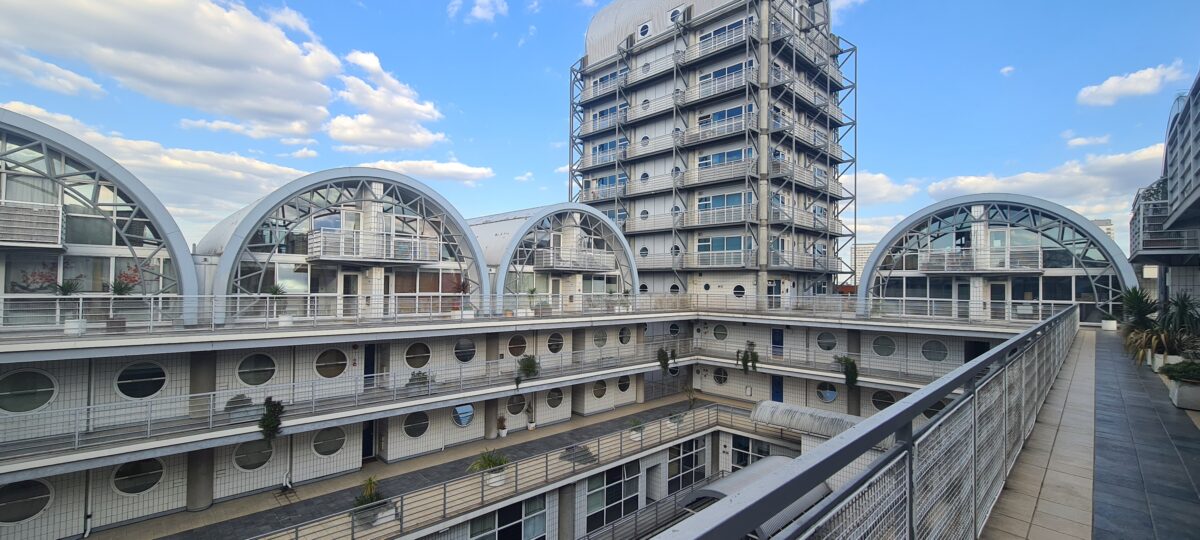Since 72 people lost their lives in the Grenfell tragedy on 14 June 2017, the cladding and building safety crisis has spiralled. Estimates vary as to how many households are affected. The End Our Cladding Scandal (EOCS) campaign believes that up to 11 million people are now caught up in the scandal. Luxury flats and social housing alike are affected. This article examines the impact of the cladding and building safety crisis on shared owners, and asks whether it lays bare fundamental flaws in the shared ownership model.
The building safety crisis has thrown into stark relief that affordability claims for shared ownership are not only ill-defined at best, but a false promise with no legal or ethical basis. This week Inside Housing reported that Irwell Valley Homes are planning to push £100,000 bills onto leaseholders and shared owners living in one of its blocks in Salford. The journalist, Jack Simpson, adds: ‘a number of housing associations are now looking to pass bills for remedial works on to leaseholders’.
June 5th saw a National Day of Developer Protests outside new home sales offices, organised by local campaigners and supported by the national End Our Cladding Scandal (EOCS) campaign. The protests will be followed next month by a Leaseholders Together rally – planned in collaboration with the National Leasehold Campaign (NLC).
How long will it be before the spotlight shifts from developers to housing associations? How long before mass protests are taking place outside housing association offices and first-time buyer events?
What has gone so wrong that shared owners who placed trust in the promise of ‘affordable homes’ now face crippling bills? What are housing associations doing to support shared owners facing life-changing building safety remediation costs? Is it enough? What lessons may be learned, and what more can be done immediately to help shared owners and leaseholders in dire situations?
The Affordable Homes Promise: What’s Gone Wrong?
Schrödinger’s Flat
Shared ownership has been described as ‘Schrödinger’s flat’; it is simultaneously affordable and unaffordable. Housing associations define affordability by way of contrast to short-term costs of buying outright or renting, or accessibility of a mortgage deposit and loan. But these definitions oversimplify and distort understanding by failing to specify timescales of comparison, and by conveniently overlooking financial obligations imposed by leasehold contracts – such as indexed annual rent increases – and costs not referenced in lease terms, including lease extension. A rent that is often set initially as a percentage of the unsold share of the property, typically 3%.
A 2019 Savills Spotlight report explains one aspect of the problem: ‘…as the rent portion of shared ownership costs rises at a premium to inflation, monthly costs will rise faster than for full ownership. This ultimately leads to shared ownership becoming more expensive than full home ownership by the end of the mortgage term’.
Neither Shared Nor Ownership
Shared ownership is not ‘ownership’; it is an assured tenancy. And given that shared owners are liable for 100% of all maintenance and repair costs, on top of service and administration charges, and are now expected to pay for building safety remediation works too, it is clearly not ‘shared’ either.
The National Housing Federation chirpy marketing campaigns reassure first-time buyers shared ownership doesn’t mean sharing their home with a stranger but fail to explain clearly the risks arising from 100% liability for all costs. In fact, sponsored content encourages first-time buyers to believe ‘there’s no catch’. Not true! Something that the devastating cladding scandal has brought into stark relief. Problems for shared owners are complex and inter-related, full stop. Building safety issues massively compound inherent flaws and contradictions in the shared ownership model.
Risk and Outcomes
Shared ownership is heavily promoted as a ‘foot on the property ladder’. But commentators, including the London Assembly and academic researchers, have drawn attention to a lack of data on the outcomes of shared ownership schemes, questioning whether it is a viable route to home ownership and whether it is appropriately classified as affordable housing.
Staircasing rates were already dismally low: a mere 2.3% staircased to 100% in 2018-19. (It’s worth noting that this percentage is not analysed between staircasing to 100% to achieve full ‘ownership’, and a simultaneous sale and staircasing transaction undertaken purely in order to sell – a crucial distinction). The building safety crisis means any shared owners who planned to staircase to 100% are now likely to be unable to obtain mortgages to do so.
Shared owners who are unable to staircase to 100% have no statutory rights to lease extension. All things being equal, the cost of lease extension increases year on year. Particularly once the all-important 80-year threshold has been breached. And, in the absence of lease extension, shared owners’ homes will devalue dramatically over time (a separate issue from the nil valuations arising from building safety issues).
Indexed annual rent increases prescribed in the Homes England shared ownership model lease mean shared owners who can’t staircase to 100% find their disposable income eroded year on year, not only by building safety charges, but also by higher than RPI rent increases on as yet un-purchased shares. Both of which make it harder to sell, trapping many shared owners as hostages in increasingly unsuitable homes; unable to start a family, with inadequate space for an existing family, accept jobs in other parts of the country, or even relocate to care for loved ones.
A significant number of shared owners will be trapped in negative equity situations as a direct consequence of building safety remediation charges. Those who purchased smaller shares, say 25%, are particularly disadvantaged. The people suffering the most severe financial distress may be those who had least to lose in the first place.
Even bankruptcy is not necessarily a way out, as bankruptcy does not discharge mortgage debts.
Going back to that £100,000 charge Irwell Valley Homes plan to levy on their shared owners… Although details remain sketchy, the Government has proposed a loan scheme capped at £50 monthly. At £50 per month, £100,000 would take 2,000 months, or 167 years to repay. Such charges are clearly a problem not just for this unfortunate generation of first-time home buyers, but for the next couple of generations too, perpetuating inequalities patently at odds with leveling up agendas.
How are Housing Associations Supporting Shared Owners?
Credit Loans
Some housing associations have obtained authorisation from the Financial Conduct Authority (FCA) to offer interest-free credit to shared owners where recharged building safety remediation costs are unaffordable. Although loans from housing associations have the advantage of being interest-free, unlike bank loans, this option raises a number of troubling questions.
The assured tenancy nature of shared ownership renders shared owners extremely vulnerable to repossession of their home in the event of mortgage or service charge arrears. Given the risks and unavoidable costs the current shared ownership model exposes shared owners to, what confidence can they have that housing associations and lenders have their best interests at heart? Why should they believe housing associations would be flexible as life circumstances change over the potentially life-long timespan of such loans? Additionally, housing associations that have already sold off freeholds may have tied their own hands regarding their ability to assist shared owners facing possession by lenders.
Such concerns are likely to be exacerbated by proposals to sell off shared ownership portfolios to institutional investors, whose primary motivation will be to maximise returns for their own shareholders and clients, not to act in the best interests of shared owners. This not only raises disturbing questions for the future of shared ownership, but also potentially stymies meaningful attempts to fix the broken housing market.
Buyback
Maureen Corcoran – a former board member of one of the largest housing associations in England, a member of the G15, and former Head of Housing in London for the Audit Commission – suggests that: ‘housing associations that sold these properties on a shared ownership basis could buy the shares back from anyone who is struggling and unable to move’. Housing associations counter that they do not have the financial means to do so at scale. Whilst some housing associations express commitment to do so in ‘exceptional circumstances’ it’s not at all clear what would constitute exceptional circumstances.
Where policies subtract the cost of any known or estimated remediation costs from the buyback valuation there may be little benefit of shared owners pursuing buyback as a way out of an impossible situation.
Reverse Staircasing
Jamie Ratcliff, Network Homes
Back-to-Back Staircasing to Facilitate Sale
Back to back staircasing (a simultaneous staircasing and sale transaction) is sometimes required due to indexed annual rent increases (RPI plus 0.5%-2%). Where such increases have resulted in rent levels becoming more expensive than local private rents – or even specified rent on local new-build shared ownership properties – the property may become unattractive in the market place. Shared owners may have no other option but to eliminate the specified rent component, regardless of the erosion of any gain by the increased selling costs arising from the staircasing transaction.
Shared owners whose building doesn’t have a satisfactory EWS1 form face additional problems. Potential buyers are not currently able to obtain a mortgage due to nil valuations. To purchase a part share buyers have to meet affordability criteria; something that is highly unlikely to be the case if they are in a position to make a cash offer. Shared owners in this situation may have no alternative to back-to-back staircasing to 100% to facilitate a cash sale on the open market.
Confirmed or potential remediation costs will drastically reduce the purchase price. This is particularly problematic for shared owners whose housing association has a policy requiring shared owners to pay over to them any difference between the valuation and the purchase price.
Subletting
Subletting is generally prohibited on shared ownership properties. This is justified by housing associations on the basis that shared ownership properties are supposed to be the primary residence of the shared owner, and not a source of profit. Such an argument erroneously conflates ‘accidental landlords’ – who may need to relocate temporarily for a variety of reasons – with commercial for-profit operators. The no-gain requirement falls away once (if) a shared owner staircases to 100%, effectively penalising shared owners who can’t afford to staircase. Or, in the case of those whose buildings are found to have safety defects, are unable to staircase due to unavailability of mortgages.
The restriction on making a gain applies only to shared owners themselves and not to housing associations, who benefit from income streams generated from shared ownership homes; nor to institutional investors eyeing up shared ownership portfolios.
When exceptional permission to sublet is given it is on a ‘no gain’ basis; with no acknowledgement of the fact that in real life it is practically impossible for landlords to plan to break-even – not least due to the unpredictable nature of shared ownership service charges (including retrospective annual adjustments). Shared owners seeking to sublet rapidly discover they have taken on all the liabilities of home ownership, with none of the financial benefits and flexibility purchasing a home usually provides.
Are Housing Associations Doing Enough?
There are clear financial challenges for housing associations in addressing the building safety crisis. But growing vocal discontent across social media and elsewhere indicates that shared owners find it hard to accept how little housing associations are doing to support them now they are facing financial ruin. More than a few shared owners now regret the mistake of trusting persuasive marketing rhetoric.
Strong sector leadership is long overdue to protect shared owners from the worst consequences of a shared ownership model that has always exposed them to unlimited risk and costs regardless of affordability claims.
The following is intended to indicate some areas where the current offering could usefully be reviewed, by no means an exhaustive list.
- Shared owners report that transparency and communication on building safety and related costs is poor. This is unacceptable and should be corrected as a matter of urgency.
“We know a bill is coming… Just not when, or how much…?”
Anonymous Shared Owner
- UKCAG research has found widespread mental health impacts due to the building safety crisis. UKCAG say: ‘There should be adequate mental health support provided for all those affected. Such support has been provided for those affected by flooding, yet still no equivalent document of support exists for the victims of this scandal. Simply directing leaseholders to LEASE is inadequate and does little to help the anguish leaseholders feel’.
- A sector-wide review of whether current provision of expert financial advice and debt counselling adequately meets identified need.
- A sector-wide published commitment to clearly identified policies to support shared owners facing building safety issues, including:
- Not to initiate possession proceedings for shared owners in arrears due to building safety remediation charges (including waking watch and increased insurance premiums).
- To waive marriage value on lease extensions (something MTVH have already committed to), and to calculate the premium on the percentage share held (where applicable) rather than total value.
- Not to charge any difference arising between the valuation and the purchase price.
- Work with mortgage lenders on whatever actions are required to facilitate access to consent to let or buy to let agreements.
- Work with Government to remove, or apply considerable discretion on application of, restrictive and hard to justify restrictions on subletting, including no gain requirements and time limits.
- Withdraw any shared ownership properties with potential building safety issues from the market unless it may be evidenced that there are no remediation cost consequences arising for first-time buyers.
- Review marketing terminology to ensure buyers have full knowledge of exposure to long-term risks and costs. This information should include – but not be restricted to – building safety and defects, and associated costs and obligations. These should be simply, transparently and adequately explained to enable informed decision-making (in compliance with Consumer Protection from Unfair Trading Regulations 2008).
- Review implications of cross-subsidy model for achievement of policy aims for shared ownership (affordability, fairness and transparency), and in relation to potential conflicts of interest.
What Lessons Can Be Learned?
The building safety crisis has bought into sharp focus a number of troubling aspects of the current shared ownership model:
- a vast discrepancy between expectations created by marketing strategies and real-life outcomes;
- adverse consequences of a policy and research focus on access to shared ownership rather than on performance of that tenure over the long-term and the success of exit strategies in achieving foot on the housing ladder policy aspirations;
- adverse consequences of a policy and research focus on financial risks, costs and benefits arising for housing associations and mortgage lenders rather than those arising for first-time buyers;
- lack of ability and will of housing associations to intervene where required arising from the nature of some partnership arrangements;
- failure of housing associations to solicit and sincerely take account of the concerns of long-term shared owners and campaigners;
- the conflict of interests which inevitably arises from the cross-subsidy model; and
- failure to fulfil fiduciary duties.
These matters should surely be of grave concern for housing association Boards of Trustees and likewise for regulators including the Regulator of Social Housing, the Charity Commission, the Advertising Standards Authority, and the Competition and Marketing Authority.
Thanks are due to Dr Audrey Verma (campaigner), Deepa Mistry (shared owner and campaigner), Dr Alison Bancroft (shared owner and campaigner), Ed Spencer (shared owner and co-founder of One Housing Residents Action Group) and Neil Goodrich (housing professional) for support in writing this article. Any errors are, of course, my responsibility and mine alone. I welcome feedback on the content.


